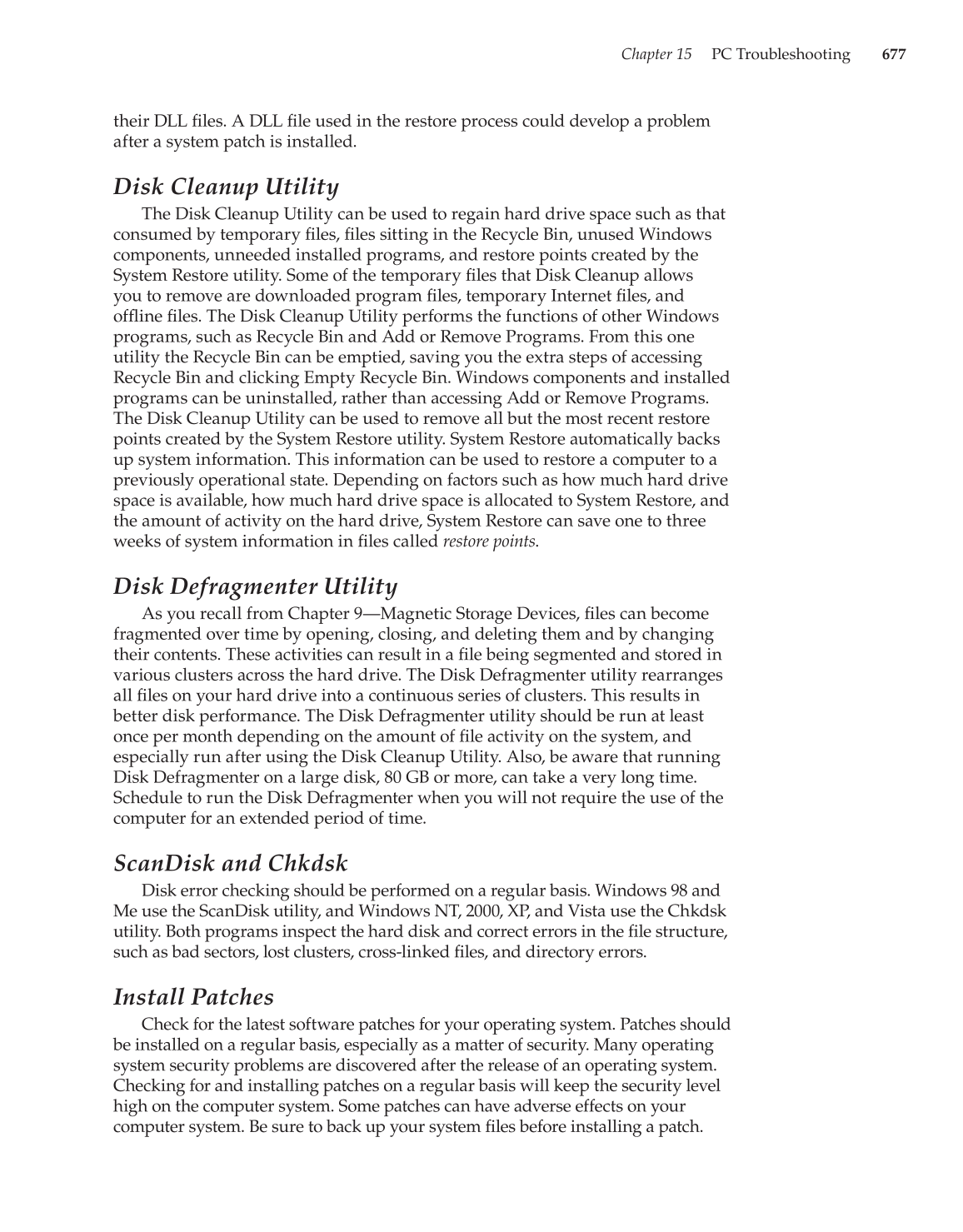Chapter 15 PC Troubleshooting 677
their DLL files. A DLL file used in the restore process could develop a problem
after a system patch is installed.
Disk Cleanup Utility
The Disk Cleanup Utility can be used to regain hard drive space such as that
consumed by temporary files, files sitting in the Recycle Bin, unused Windows
components, unneeded installed programs, and restore points created by the
System Restore utility. Some of the temporary files that Disk Cleanup allows
you to remove are downloaded program files, temporary Internet files, and
offline files. The Disk Cleanup Utility performs the functions of other Windows
programs, such as Recycle Bin and Add or Remove Programs. From this one
utility the Recycle Bin can be emptied, saving you the extra steps of accessing
Recycle Bin and clicking Empty Recycle Bin. Windows components and installed
programs can be uninstalled, rather than accessing Add or Remove Programs.
The Disk Cleanup Utility can be used to remove all but the most recent restore
points created by the System Restore utility. System Restore automatically backs
up system information. This information can be used to restore a computer to a
previously operational state. Depending on factors such as how much hard drive
space is available, how much hard drive space is allocated to System Restore, and
the amount of activity on the hard drive, System Restore can save one to three
weeks of system information in files called restore points.
Disk Defragmenter Utility
As you recall from Chapter 9—Magnetic Storage Devices, files can become
fragmented over time by opening, closing, and deleting them and by changing
their contents. These activities can result in a file being segmented and stored in
various clusters across the hard drive. The Disk Defragmenter utility rearranges
all files on your hard drive into a continuous series of clusters. This results in
better disk performance. The Disk Defragmenter utility should be run at least
once per month depending on the amount of file activity on the system, and
especially run after using the Disk Cleanup Utility. Also, be aware that running
Disk Defragmenter on a large disk, 80 GB or more, can take a very long time.
Schedule to run the Disk Defragmenter when you will not require the use of the
computer for an extended period of time.
ScanDisk and Chkdsk
Disk error checking should be performed on a regular basis. Windows 98 and
Me use the ScanDisk utility, and Windows NT, 2000, XP, and Vista use the Chkdsk
utility. Both programs inspect the hard disk and correct errors in the file structure,
such as bad sectors, lost clusters, cross-linked files, and directory errors.
Install Patches
Check for the latest software patches for your operating system. Patches should
be installed on a regular basis, especially as a matter of security. Many operating
system security problems are discovered after the release of an operating system.
Checking for and installing patches on a regular basis will keep the security level
high on the computer system. Some patches can have adverse effects on your
computer system. Be sure to back up your system files before installing a patch.
